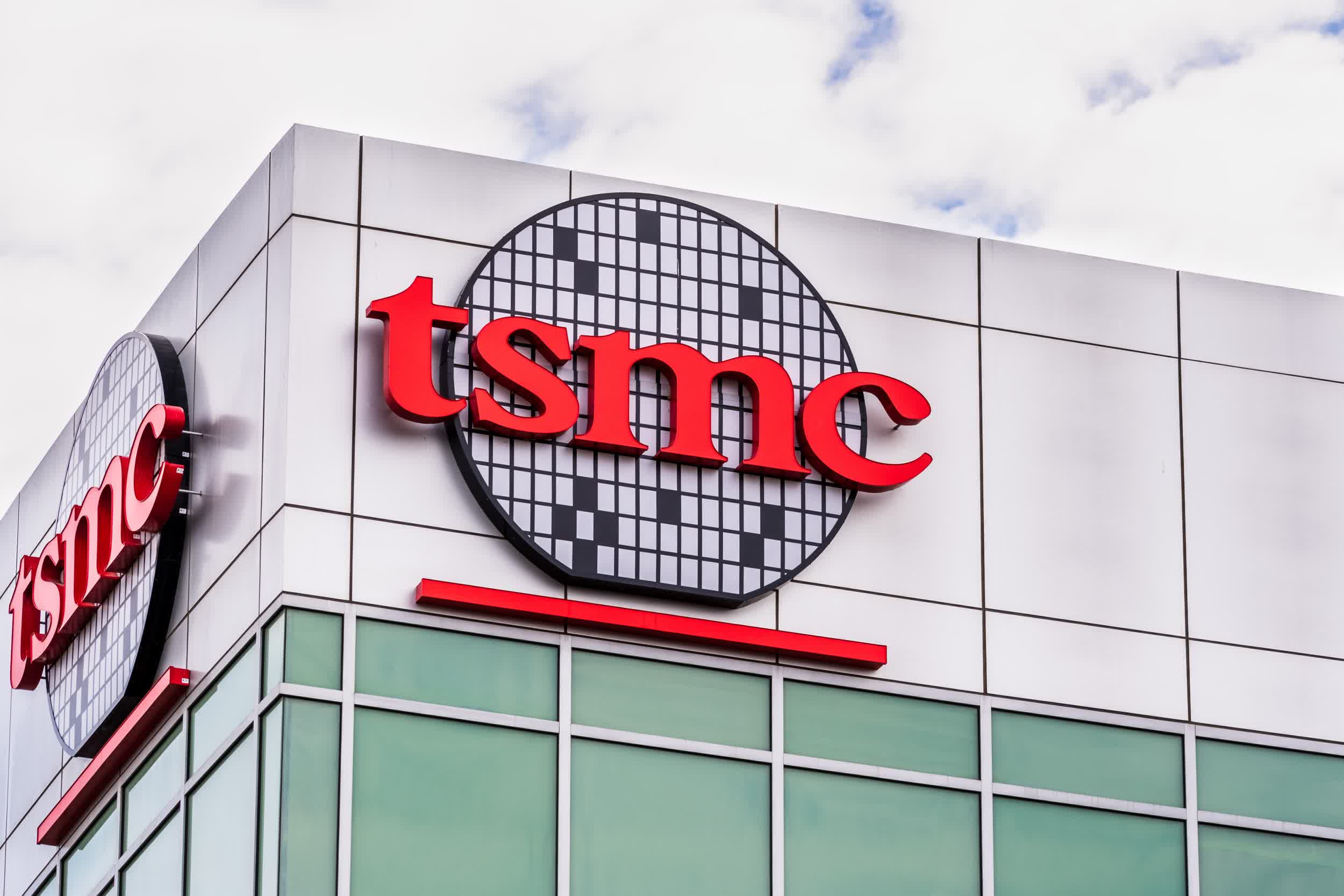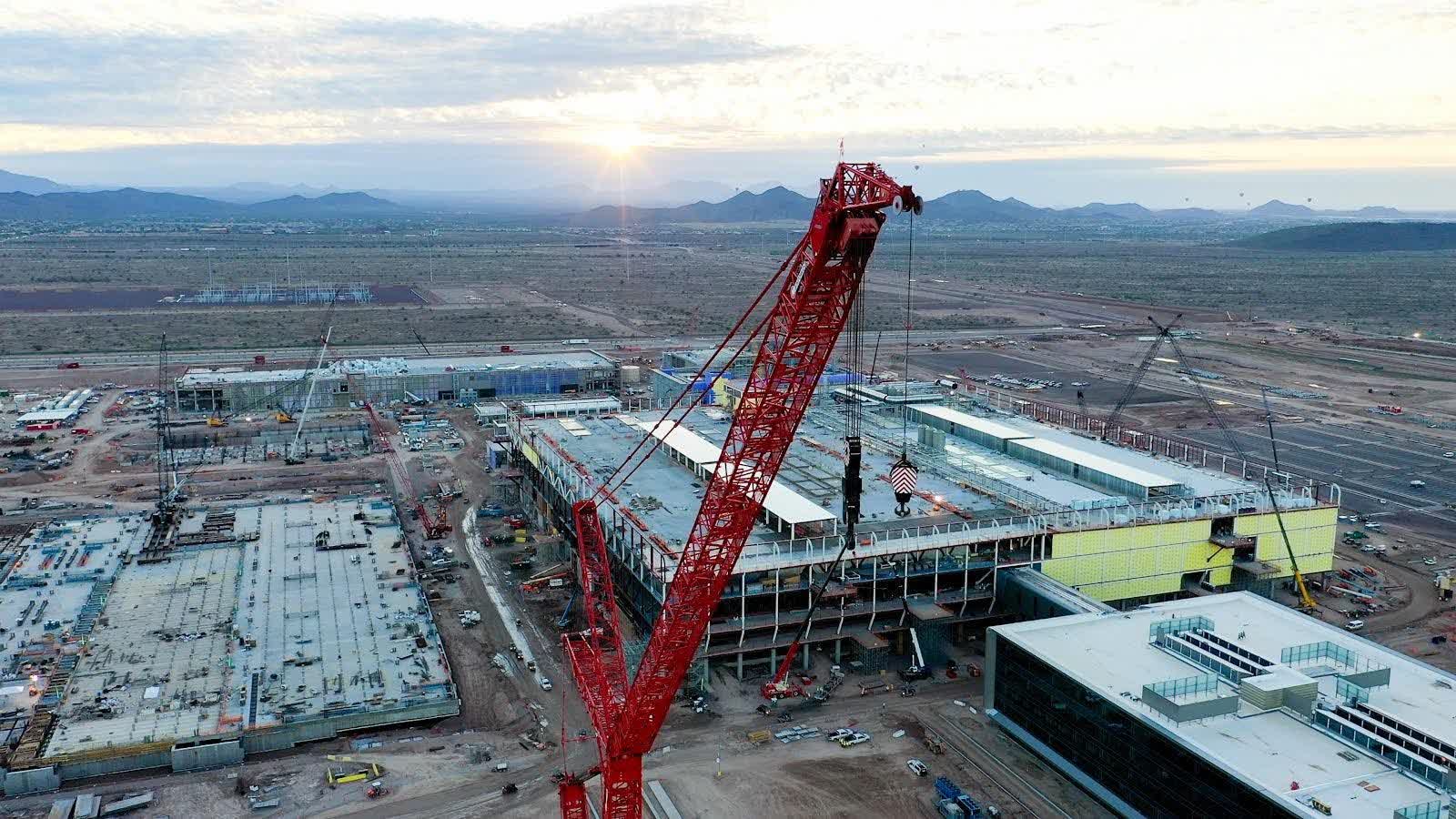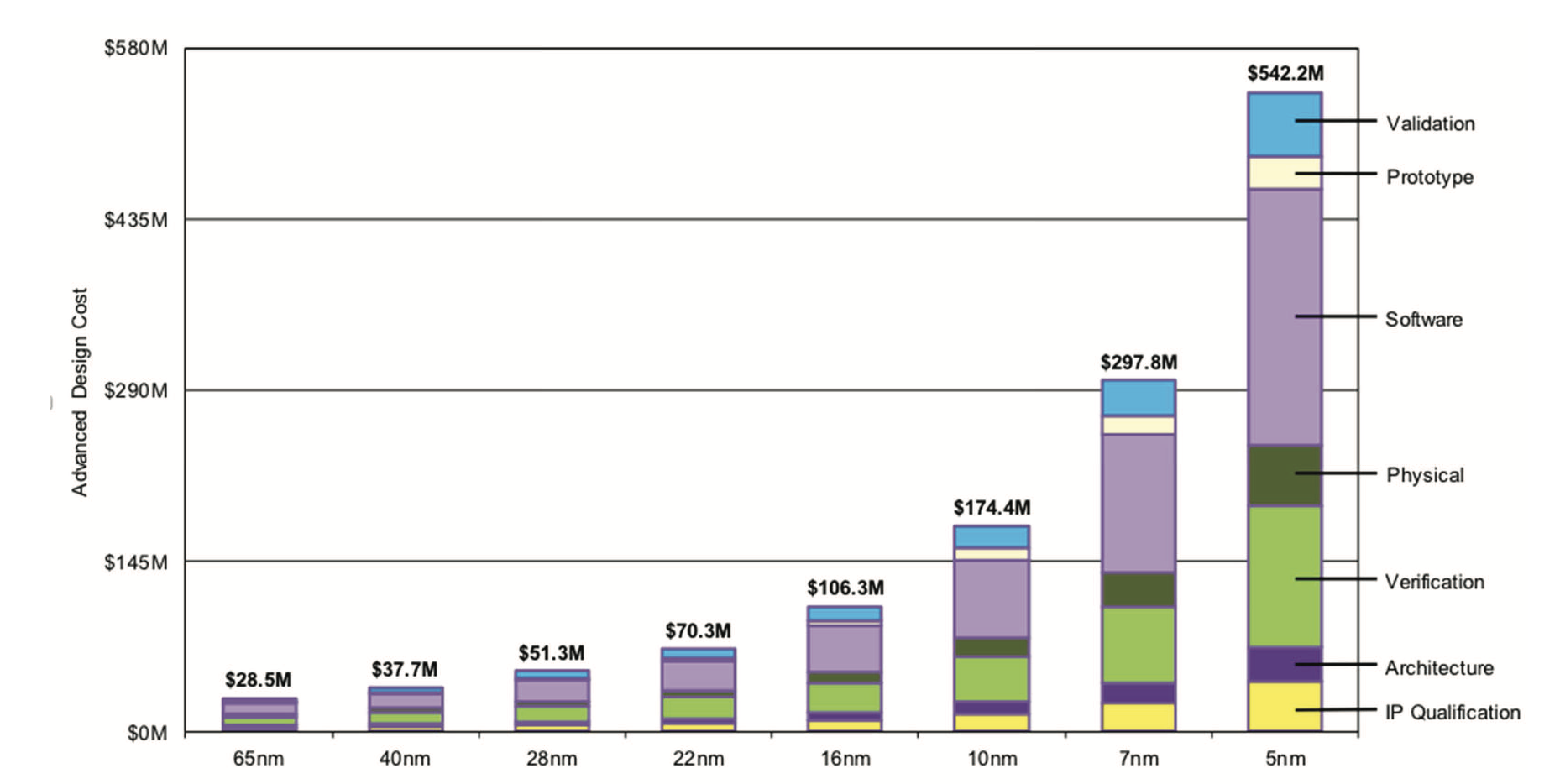The big picture: Setting up a chip factory in the US is an expensive endeavor, especially when compared to doing the same in Asia. Still, companies like TSMC are investing billions into doing just that, wooed by government subsidies and the idea of achieving a geographically diverse supply chain that is less prone to disruptions. As a result, chips made by the Taiwanese giant in the US could end up 30 percent more expensive than those made in its home country.

Back in December, TSMC announced it would pour no less than $40 billion into building two advanced chip factories in Arizona. In other words, the world's biggest chipmaker made the largest direct foreign investment in Arizona history and one of the largest in US history. When they become operational, the fabs will employ thousands of people and produce around 600,000 wafers per year.
The move represents a significant shift in mindset for TSMC leadership, which has traditionally been reluctant to establish chip manufacturing facilities in the US. One reason has to do with Taiwan's policy of keeping its most advanced technologies locally even as it builds external manufacturing arms for a more resilient global supply chain.

Image: TSMC's Arizona chip plants
Another reason has to do with cost – setting up and operating a factory on American soil is up to 50 percent more expensive than in Taiwan. Then you'd need to source materials like rare earth metals and semiconductor-grade neon as well as a steady supply of water to keep the facility running at full capacity. And last but not least, you need a lot of skilled (and cheap) labor, something that is easier to find in Asia as opposed to North America and even Europe.
Naturally, this means TSMC will have extra costs in the US that will translate into higher prices for wafers made in Arizona as opposed to those made in Taiwan. Some industry insiders estimate that chips made in America on N5 and N4 process nodes will cost up to 30 percent more than those made in the Asian country.
Also read: How did TSMC get so good?
It's not just the US that's more expensive than Taiwan for chip manufacturers, either. Chips made on older, more mature process technologies like N28, N22, N16, and N12 at TSMC's Japanese arm in Kumamoto are also 10-15 percent more expensive to make than similar chips made in the company's home country.
Just like the US, Japan is looking o reignite its once-dominant semiconductor industry. Last year, we learned the two countries kicked off a joint research and development arm for 2nm-class process technologies and beyond.
Still, that's unlikely to bring costs down for US-made chips as wafer suppliers are undergoing capacity expansions that can't keep up with the chip foundry expansions of companies like TSMC, Intel, and Samsung – all of which are building new fabs in the US and elsewhere.

Source: IBS
Furthermore, bleeding-edge EUV equipment from ASML is in short supply, and a single machine costs up to $160 million, with the next-generation version set to cost up to $400 million apiece. And research and development costs for chips made using more advanced process nodes have skyrocketed in recent years.
Like Intel and Samsung, TSMC wants to cover some of the cost of setting up its Arizona fabs using $15 billion from the CHIPS Act funding pool. At the same time, TSMC founder Morris Chang has expressed doubts about the US' ability to quickly boost local manufacturing by simply throwing more money at the problem. He also believes sanctions against China have the potential to increase chip prices over time as a result of industry fragmentation.
In the end, even if chip manufacturing is more expensive in the US, companies with deep pockets like Apple will no doubt be happy to pay a little extra to ensure they have a diverse supply chain that isn't prone to the same issues that cropped up in recent years. And with a US presence, TSMC is essentially buying an insurance policy for its operations both in the US as well as in Taiwan – a win-win situation.
https://www.techspot.com/news/98541-tsmc-may-charge-30-percent-more-chips-made.html